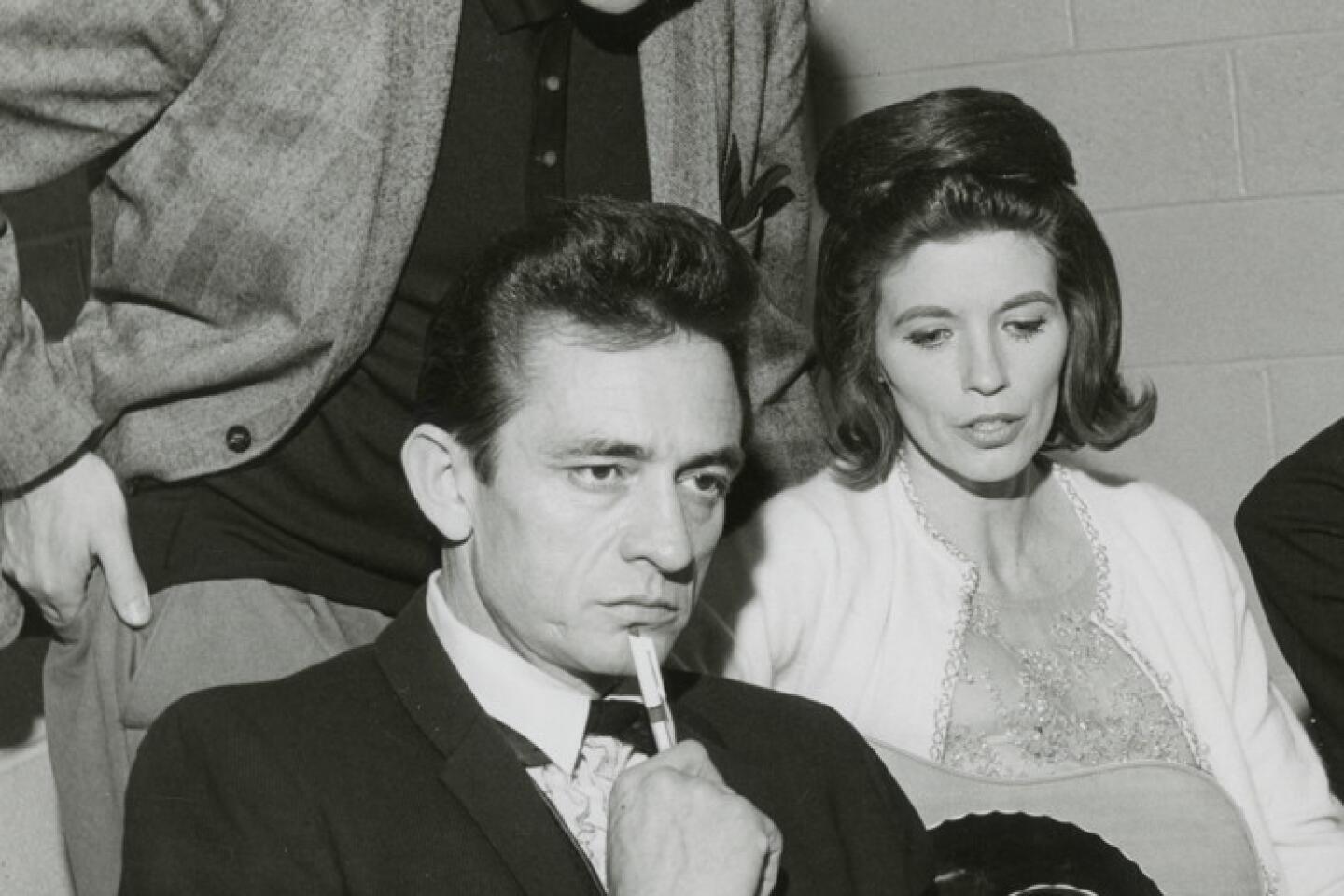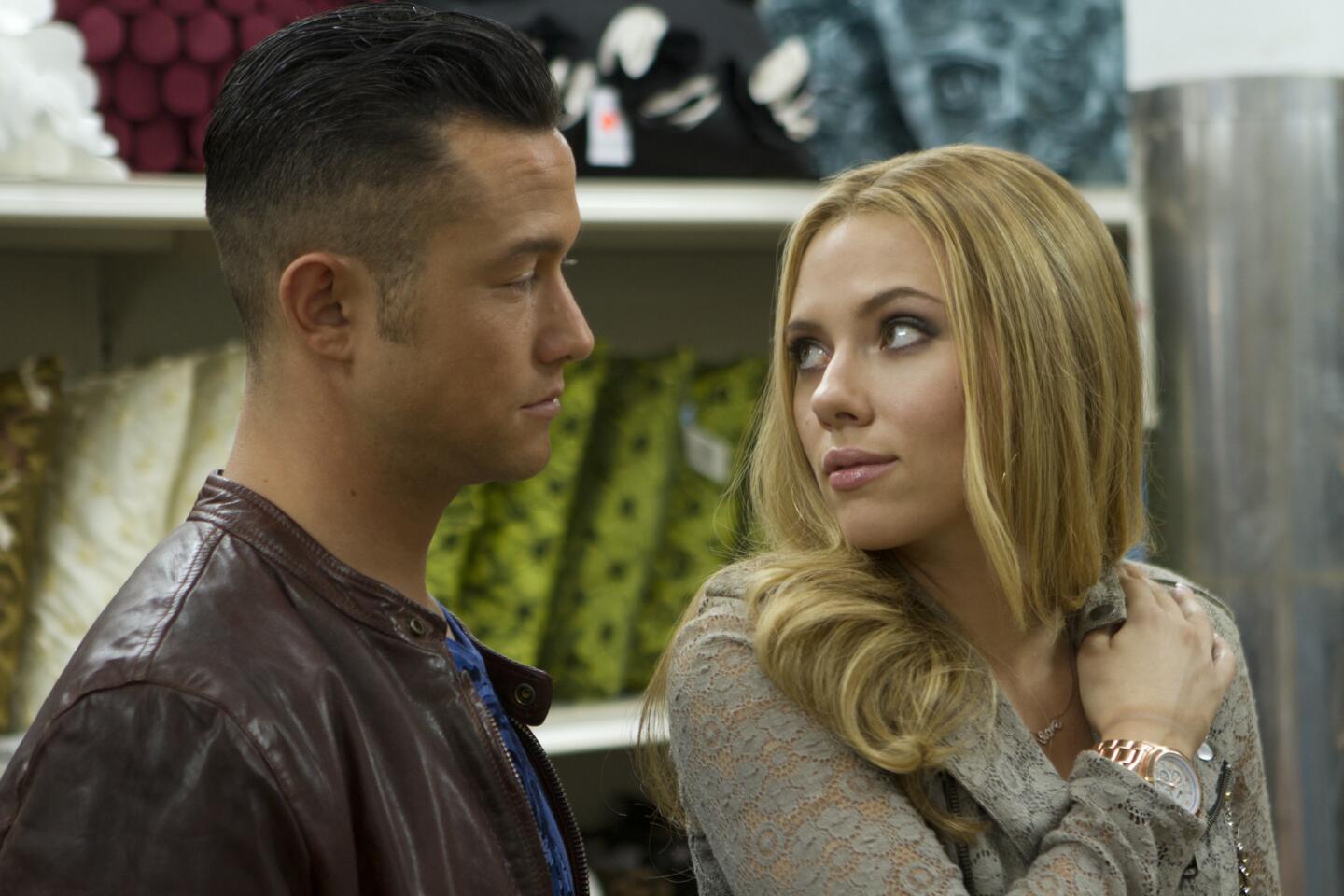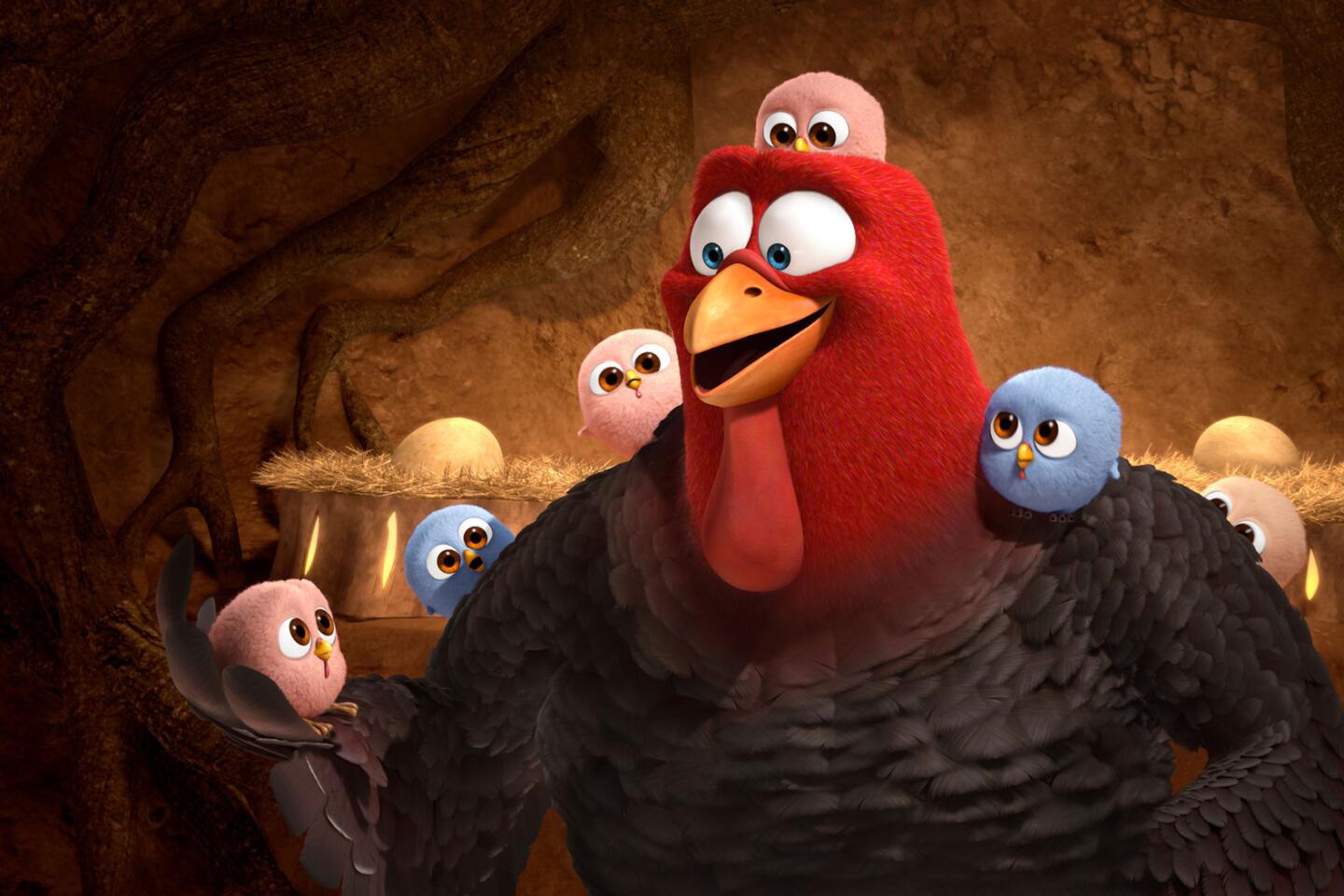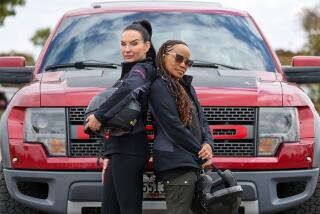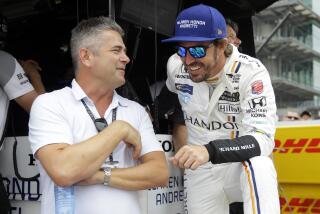Ron Howard’s ‘Rush’ zooms in on racing daredevils’ rivalry
It wasn’t just that Ron Howard didn’t follow Formula One racing.
He was equally unfamiliar with the particulars of NASCAR, Indy car, drag racing, monster trucks — if it had four wheels and wasn’t his car, what was there to worry about?
“I’m not a motor sports fan,” the director said. “But I knew it was sexy and cool and very dangerous.”
Screenwriter Peter Morgan, who collaborated with Howard on “Frost/Nixon,” was equally naive and even a bit uninterested. “I’m really not a Formula One fan,” Morgan said.
But Howard and Morgan knew an unusual human drama when they saw one, regardless of whether it was unfolding at speeds approaching 200 mph. That the larger-than-life rivalry between racers James Hunt and Niki Lauda would be partly dramatized in McLarens and Ferraris screeching around serpentine tracks — well, they would figure out the racing parts when it came time.
Their resulting film, Sept. 20’s “Rush,” is a drama about prominent athletes in the 1970s who had hardly anything in common except an unyielding need to beat the other to the checkered flag.
Hunt (played by Chris Hemsworth) was a dashing British playboy seemingly drafted from a Greek myth, as comfortable seducing women as navigating a hairpin turn. The Austrian Lauda (“Inglourious Basterd’s” Daniel Bruhl), even before he was horribly burned in a 1976 crash, was considered less attractive, his teeth jutting out so prominently like a rodent’s that he was nicknamed “The Rat.”
SNEAKS: Movie trailers, full coverage
Once they strapped on their helmets and were belted into their racing machines, however, they were equals — almost.
Hunt, who died in 1993, was a fearless daredevil, his bravado sometimes compensating for tactical shortcomings. Lauda, who today works in aviation and race commentary, brought a mathematician’s exactitude to the sport, and his technical brilliance made him that much faster than his pursuers.
“Rush” tracks the genesis of their competition, focusing on the closely contested 1976 racing season, whose winner wasn’t determined until the final race, the Japanese Grand Prix in Fuji.
Yet the $50-million film, which was independently financed at a fraction of the budget of Howard’s “The Da Vinci Code,” is not obsessed with the minutiae of torque, down force and short shifting. Instead, “Rush” is a tale of two men who are alternately infatuated and repelled by the other, all while willing to take great risks to prove their Y-chromosome superiority.
PHOTOS: Billion-dollar movie club
“James was the only guy that Niki clearly idolized — but not as a racer, even though he feared him as a racer,” said Morgan. “He idolized him as a man, his sexual virility. Niki knew that over the course of 10 races, he would beat James. But it didn’t boil down to that. Niki had him licked as a racer but not as a man.”
The movie was born several years ago when Morgan was asked by an American producer to write a Formula One movie. “My heart sank, really, because I’m not really a Formula One fan, and it’s so particular,” said Morgan, who wrote the Oscar-winning “The Queen.” Before he passed on the proposal, Morgan did a bit of research and came across the personal and professional duel between Hunt and Lauda.
“And I said, ‘This is riveting,’ ” Morgan said. “It really connected to me, and I don’t connect to many things.”
The original producer wasn’t interested in the Hunt-Lauda tale, so Morgan wrote the script on his own dime, meeting over many meals with Lauda, with whom he immediately connected and who was content to have Morgan write a warts-and-all account.
PHOTOS: Celebrities by The Times
“I was brought up by two refugees of Germany and was raised in a world of James Hunts where I was the Niki Lauda,” Morgan said, recalling being called “kraut” by his English schoolmates. “I really wanted to write about those two cultures.”
The script was originally going to be directed by “The Bourne Ultimatum’s” Paul Greengrass, but he left the project just as Howard’s adaptation of Stephen King’s “The Dark Tower” was falling apart. He immediately jumped to “Rush.”
Casting proved far more problematic. Bruhl, who looks much like a younger Lauda, was a natural fit, but Howard and his casting director struggled to find the proper Hunt.
PHOTOS: Greatest box office flops
The director had met Hemsworth for a possible role in “The Dark Tower” and had admired his work in “Thor” yet knew the bulked-up Australian couldn’t even squeeze into a Formula One cockpit. But in the middle of shooting “The Avengers,” Hemsworth sent Howard a letter beseeching the director to reconsider and not only vowed to lose weight for the part but also sent along a self-made video of himself as Hunt.
“He had the body language — the surfer feel,” Howard said. “He won the role.”
Thanks to the evolution of filmmaking tricks (with a “Zelig”-like effect, Howard’s action scenes are transposed into period backgrounds) and Anthony Dod Mantle’s (“Slumdog Millionaire”) cinematography, “Rush” takes audiences inside the cars and the racers’ helmets. “I felt I could make the races an extension of the characters, and make them feel vital and visceral,” Howard said.
Howard admits that the film “is a marketing challenge,” a period film about a niche sport with no discernible villain. But he hopes people will see “Rush” as a homage to a lost era — “Where sex was safe and driving was dangerous,” Howard said — and, ultimately, a human story, not a sports film.
More to Read
Only good movies
Get the Indie Focus newsletter, Mark Olsen's weekly guide to the world of cinema.
You may occasionally receive promotional content from the Los Angeles Times.
